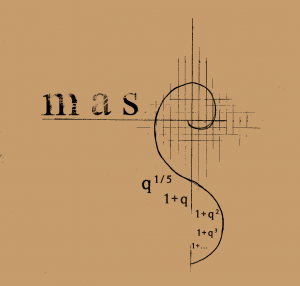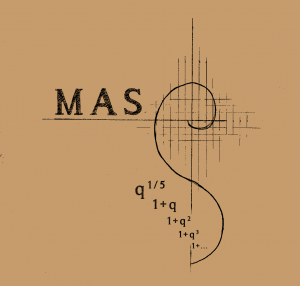Exercise 19.1 Recall \(S\) is a smooth surface we defined in class, prove that:
(a) the assertion just made, that \({{r}_{x}},{{r}_{y}}\) are linearly independt.
(b) Also, prove that the definition of tangent plane is chart independent.
Solution.
(a)
Let \(r:V\to U\) be a chart such that \(r({{x}_{0}},{{y}_{0}})=p\), here \(V\subset {{\mathbb{R}}^{2}}\) is an open set, \(U\subset S\) is an open set which contains \(p\). We can choose \(r\) so that \(r(0,0)=p\), otherwise we can replace \(r(x,y)\) by \(r(x’+{{x}_{0}},y’+{{y}_{0}}).\)
From the graph property of the surface \(S\), we can represent other \(N-2\) coordinates by smooth functions \({{r}_{1}}(x,y),\cdots ,{{r}_{N-2}}(x,y)\), so we have
\(r(x,y)=(x,y,{{r}_{1}}(x,y),\cdots ,{{r}_{N-2}}(x,y)).\)
Hence
\({{r}_{x}}=(1,0,{{r}_{1}}_{x},\cdots ,{{r}_{(N-2)x}}),{{r}_{y}}=(0,1,{{r}_{1y}},\cdots ,{{r}_{(N-2)y}})\)
They are obviously independent since \((1,0)\) and \((0,1)\) are independent.
(b)
Suppose \(({{U}_{1}},{{V}_{1}},\varphi )\) and \(({{U}_{2}},{{V}_{2}},\psi )\) are two graph charts such that \(p\in {{U}_{1}},{{U}_{2}}\), \({{V}_{1}}\subset {{\mathbb{R}}^{2}},{{V}_{2}}\subset {{\mathbb{R}}^{2}}\) are open sets, \(\varphi ,\psi \) are smooth functions.
Then \({{\psi }^{-1}}\circ \varphi :{{V}_{1}}\to {{V}_{2}}\) is a smooth function. Suppose
\(\varphi ({{x}_{0}},{{y}_{0}})=\psi ({{s}_{0}},{{t}_{0}})=p,\varphi (x,y)=\psi (s,t)\in {{U}_{1}}\cap {{U}_{2}}\),
Since the coordinate function \({{\pi }_{1}}:(s,t)\to s,{{\pi }_{2}}:(s,t)\to t\) are smooth, we have two smooth function \(S={{\pi }_{1}}\circ {{\psi }^{-1}}\circ \varphi \) and \(T={{\pi }_{2}}\circ {{\psi }^{-1}}\circ \varphi \) such that
\(s=S(x,y),t=T(x,y)\).
Now from \(\varphi (x,y)=\psi (s,t)=\psi (S(x,y),T(s,t))\) and the chain rule of differentiation, we have
\({{\varphi }_{x}}({{x}_{0}},{{y}_{0}})={{\psi }_{s}}(S({{x}_{0}},{{y}_{0}}),T({{x}_{0}},{{y}_{0}})){{S}_{x}}({{x}_{0}},{{y}_{0}})+{{\psi }_{t}}(S({{x}_{0}},{{y}_{0}}),T({{x}_{0}},{{y}_{0}})){{T}_{x}}({{x}_{0}},{{y}_{0}}),\)
\({{\varphi }_{y}}({{x}_{0}},{{y}_{0}})={{\psi }_{s}}(S({{x}_{0}},{{y}_{0}}),T({{x}_{0}},{{y}_{0}})){{S}_{y}}({{x}_{0}},{{y}_{0}})+{{\psi }_{t}}(S({{x}_{0}},{{y}_{0}}),T({{x}_{0}},{{y}_{0}})){{T}_{y}}({{x}_{0}},{{y}_{0}}).\)
Hence \({{\varphi }_{x}},{{\varphi }_{y}}\) can be represented as the linear combination of \({{\psi }_{s}},{{\psi }_{t}}\), similarly \({{\psi }_{s}},{{\psi }_{t}}\) can be represented as the linear combination of \({{\varphi }_{x}},{{\varphi }_{y}}\), so
\(\textrm{span}\{{{\varphi }_{x}},{{\varphi }_{y}}\}=\textrm{span}\{{{\psi }_{s}},{{\psi }_{t}}\}\),
hence they produce the same 2-dimensional subspace in both cases, so the definition of tangent plane is chart independent.
This solution is a little long, but the idea is simple, maybe I just used too much words. If there are some mistakes or questions about the solution, please reply to this post, thank you.


